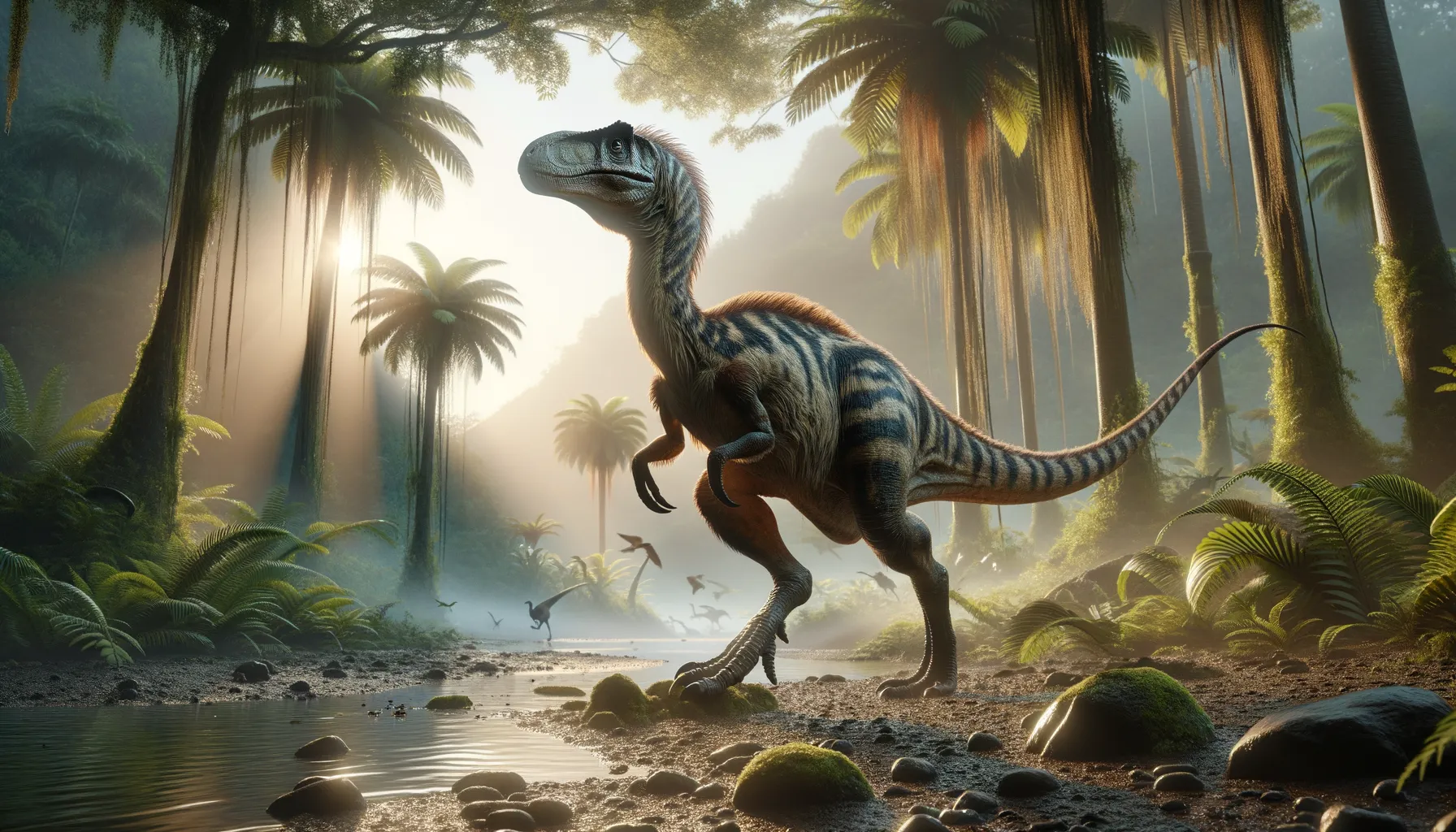
Avipes
A swift glimpse into the Jurassic skies.
Period
Jurassic
Length
Presumed to be around 1 meter.
Height
Unknown, likely small and bird-like.
Weight
Estimated to be light, around several kilograms.
Avipes is a genus of small theropod dinosaurs whose exact classification is still under debate. Its name, meaning 'bird foot', suggests similarities to avian dinosaurs. Currently, only limited fossil evidence exists, but it is believed to share characteristics with other small, agile theropods from the Jurassic period. The specific details of its physical appearance and behavior remain largely speculative due to the scarcity of findings.
Diet
Based on its size and the typical diet of small theropods, Avipes was likely a carnivore, feeding on small animals and possibly insects. Its agility would have been an advantage in capturing prey.
Hunting
Avipes may have hunted using swift movements and surprise tactics, similar to modern small carnivorous birds. Its potentially lightweight body could have helped it maneuver quickly to catch prey.
Environmental challenges
Avipes would have faced numerous environmental challenges, including competition for food with other predators. The changing climate and vegetation during the Jurassic period could also have posed challenges for survival. Natural hazards such as predators and harsh weather conditions would have tested its resilience and adaptability.
Speed
Likely agile and swift.
Lifespan
Exact lifespan unknown, typical for small theropods.
First discovery
Discovered in Germany in the early 21st century.
Fun Facts
- Avipes is known from a single fossil, making it a mysterious creature from the past.
- The name 'Avipes' means 'bird foot', hinting that it had avian-like features.
- It lived during the Late Triassic period, over 200 million years ago, a time when dinosaurs were just beginning to diversify.
- Avipes was likely small and agile, possibly similar in size to a modern-day chicken.
- Its exact diet is unknown, but it might have been an omnivore, eating both plants and small animals.
- The fossil evidence of Avipes was first discovered in Germany, providing insights into European prehistoric life.
- Avipes is part of a group of early dinosaurs that show the transition from reptile-like features to more bird-like characteristics.
Growth and Development
Avipes likely underwent rapid growth in its early years, similar to other small theropods, reaching maturity quickly to avoid predation. Its development would have included transitioning to more complex hunting skills as it grew. Once mature, Avipes would have been a capable hunter, relying on speed and agility.
Habitat
Avipes likely inhabited a variety of environments, including forests and open areas, where it could use its speed to navigate and hunt. These habitats provided both prey and protection. The availability of different habitats would have influenced its distribution and survival.
Interaction with other species
Avipes would have interacted with other dinosaurs and animals in its environment, competing for resources like food and territory. It may have had minimal social interactions outside of mating, typical for small theropods. Coexisting with other species, Avipes had to be cautious of larger predators, potentially using its agility to avoid danger.
Natural lifespan
The natural lifespan of Avipes is currently unknown.
Reproduction
Avipes likely reproduced by laying eggs, a common trait among theropod dinosaurs. Nesting behavior and parental care are speculative, but it would have ensured the survival of offspring. Reproduction might have occurred in intervals aligned with resource availability in its environment.
Social behaviour
While specific information on Avipes is lacking, it may have exhibited solitary behaviors typical of small theropods. If social interactions occurred, they were possibly limited to mating and territorial disputes. Avipes might have communicated using vocalizations and visual displays if necessary.
Fossil locations
Avipes fossils have been found in Germany, revealing limited information about its distribution. The discoveries have helped provide some understanding of its existence and environment. Continual fossil studies could uncover more about its range and behaviors.
